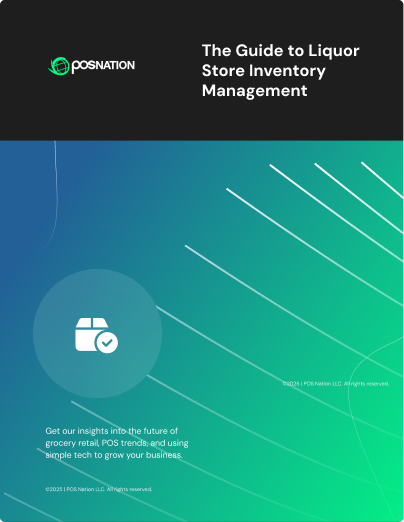On average, U.S. businesses lose more than $50 billion annually to employee theft — a reality that can make any small business owner feel uneasy.
Even the most carefully managed operations are vulnerable to losses that quietly add up, especially if you don’t know how to identify risks or respond when theft occurs.
From cash register skimming to misuse of company property, employee theft can take many forms. In this blog, we’ll cover the most common types, explain relevant employee theft laws, and share practical strategies — including how modern point of sale (POS) systems can help protect your business.
Understanding Employee Theft Laws in 2025
First, we need to understand the current state of employee theft laws in the U.S. These laws protect businesses and define what actions business owners need to take when theft occurs.
Most retail theft cases fall under state law and include several types of offenses:
- Larceny occurs when an employee takes property without permission.
- Embezzlement happens when an employee misuses property they are legally allowed to access.
- Fraudulent reporting occurs when an employee misrecords sales to conceal theft.
- Skimming involves pocketing cash while recording a lower amount in the system.
- Theft of information happens when an employee takes confidential business data.
- Collusion occurs when two or more employees work together to steal from the business.
Federal laws apply only in limited situations, such as theft involving government property, interstate shipments, mail, or regulated goods. Understanding the type of theft can guide your next steps, as embezzlement requires different evidence and procedures than direct cash or inventory theft.
In the following sections, we’ll break down five common employee theft situations and how to spot them, plus practical tips to protect your business.
1. Time Theft
Time theft occurs when employees get paid for hours they didn’t actually work, typically including improperly logged timesheets, buddy punching, or recording overtime that the employee themselves did not earn.
While hourly employees are most at risk, time theft can occur in any role. These losses might seem small at first, but over weeks and months, they add up — and they can mess with scheduling and payroll.
To prevent time theft at your business:
- Implement a clear clock-in and clock-out system with your POS to properly track each employee’s time.
- Compare recorded hours to actual work activity, like sales transactions or completed tasks, to catch discrepancies.
- Rotate the responsibility of auditing timesheets among different managers to bring a fresh set of eyes.
- Include proper timesheet procedures in employee onboarding and recurring trainings to prevent confusion.
Since your employees will likely use your POS system to clock in and out each shift, it serves as your lifeline for viewing hours worked, activity patterns, and potential red flags. These records give you a paper trail if you ever need to address an issue — or back up your decisions if a dispute comes up later.
Related Read: 6 Ways To Identify Employee Theft Using Your POS [and How To Prevent It]
Regularly reviewing these reports also helps you identify scheduling gaps or understaffed periods before they lead to more significant payroll issues. A little consistency in monitoring goes a long way in keeping your labor costs accurate and your team accountable.
2. Theft of Supplies
Employees taking office or store supplies might seem like a small offense at first, but left unchecked, it can quickly escalate into larger financial and operational problems.
Related Read: 5 Causes of Inventory Discrepancy [And How To Prevent Them]
Missing packaging materials, cleaning products, or other everyday items can lead to delays in fulfilling orders, overordering stock, or extra labor costs to replace missing items.
To prevent and document supply theft:
- Track inventory per employee and log every supply request to keep a clear paper trail and accurately trace product usage over time.
- Conduct thorough background checks during hiring and clearly communicate to your team how to properly handle company property.
- Require employees to sign a written supply policy that outlines acceptable use and consequences for misuse.
- Use your POS to monitor inventory activity, generate pick lists for orders, track returns, and run reports to flag anything unusual.
Clear policies and consistent tracking make it easier to spot unusual patterns and address problems before things escalate. Adding cameras in storage or shipping areas can help detect theft of high-value or frequently missing items. When paired with POS inventory logs, these measures make unusual activity easier to spot and document.
3. Money Theft
Money theft is often what first comes to mind when thinking about employee theft, and it can take many forms — including skimming, under-ringing, or direct cash theft. Even small losses at the register can add up quickly, affecting both profits and customer trust.
To prevent and document money theft:
- Require employee logins for each register session and assign cash-handling roles to limit access.
- Separate duties and reconcile cash drawers regularly, tracking transactions, returns, and cash-outs by employee.
- Watch for unusual activity like voids, partial payments, or suspicious returns that could signal theft.
- Install cameras on registers, retain footage according to legal requirements, and restrict access to sensitive functions.
By tracking cash handled per employee, monitoring partial payments and returns, and restricting access through defined register roles, your POS system gives you visibility into every single transaction.
4. Merchandise Theft and Shoplifting by Employees
Employees often know store layouts, stock locations, and inventory patterns, which can make internal merchandise theft easier than external shoplifting. Common types include taking items for personal use, abusing employee discounts, or processing fraudulent returns.
To protect merchandise:
- Track item-level sales, returns, and discounts by employee using POS reporting to spot unusual patterns or repeated abuse.
- Restrict access to high-value items and sensitive areas, and assign clear register and inventory roles.
- Require manager approval for voids, returns, or employee discounts, and monitor these actions through the POS system.
- Monitor delivery areas, trash removal, and other exit points to prevent merchandise from leaving the store without documentation.
Combining employee-level POS tracking with surveillance cameras and controlled access gives visibility into every transaction and movement of merchandise. These records make it easier to identify theft patterns, address issues quickly, and provide clear evidence if legal action becomes necessary.
5. Theft of Confidential Information
Employee theft isn’t always tangible — things like customer data or internal reports are just as valuable, and losses can be as damaging as missing cash or merchandise. Legal protections like trade secret laws and employment contracts provide recourse, but prevention is key.
To safeguard sensitive information:
- Limit access to sensitive data in your POS and network based on roles, so employees only see what they need to do their job.
- Use unique logins and strong passwords, and track activity to spot unusual access or attempts to view restricted information.
- Monitor sales, inventory, and financial records for irregular access patterns that could indicate someone is copying or misusing data.
- Secure physical and digital files, including customer information and internal reports, and conduct regular audits to identify potential leaks early.
In short, give employees access only to what they need for their role, and watch for unusual activity in sales, inventory, or financial reports. Strong logins, confidentiality agreements, and secure file storage help spot and address issues early.
Preventing Employee Theft in Practice
Catching employee theft proactively involves routine checks, and the table below outlines actions you can take to identify issues early, maintain clear records, and protect your business.
| Check Frequency | What To Do |
|---|---|
| Daily | ☑️ Reconcile cash drawers and ensure sales match POS records. ☑️ Review voids, refunds, and employee discounts for unusual patterns. ☑️ Spot-check inventory of high-value or frequently missing items. |
| Weekly | ☑️ Conduct inventory audits, including surprise counts of select items. ☑️ Compare POS sales data to stock movement reports. ☑️ Review security camera footage in critical areas like registers, storage rooms, and delivery points. |
| Monthly | ☑️ Audit employee access logs for unusual attempts to view sensitive information. ☑️ Examine trends in returns, discounts, or cash discrepancies. ☑️ Verify all security cameras are functioning, positioned correctly, and that recordings are stored securely. |
Regular checks and audits help you catch issues early and keep detailed documentation in case something goes wrong, is missing, or if you need to take action with an employee.
Proper Employee Termination
If you’ve identified any issues repeatedly in your routine checks, start by addressing the behavior directly with the employee. Document discussions, provide clear expectations, and offer support to correct the issue before moving toward termination.
If the employee does not improve despite these efforts, you may need to consider termination. At that point:
- Keep written records of all prior coaching, warnings, and disciplinary actions.
- Document policy violations or misconduct with incident reports and, if possible, witness statements.
- Prepare a separation letter with final pay, benefits information, and instructions for returning company property.
- Plan how to reassign responsibilities to avoid team disruption.
- Store all documentation securely, limiting access to HR or management staff to maintain confidentiality.
These steps show that you gave the employee a fair chance to improve while protecting your business and maintaining legal compliance.
Take Control of Employee Theft With the Right Tools
Employee theft can take many forms, and the impact goes beyond lost cash or merchandise. By understanding the types of theft, knowing your legal obligations, and implementing consistent monitoring, you gain control over your operations and protect your business.
Modern POS systems make it easier to track sales, inventory, employee activity, and sensitive data — giving you clear, reliable records to spot irregularities early and make informed decisions when issues arise.
POS Nation offers industry-specific solutions designed for retailers like you, with built-in reporting, user-level access controls, and real-time alerts to help safeguard your business.
Schedule a demo today to see how the right POS system can help you stay protected and in control.







 by Brian Sullivan
by Brian Sullivan

 by Cort Ouzts
by Cort Ouzts

 by Spence Hoffman
by Spence Hoffman

 by Graham Hoffman
by Graham Hoffman